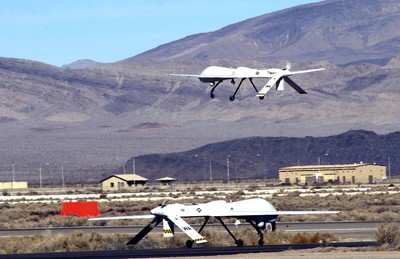New Report Cites Defense Increases, Growth In Civil Market
Market research firm Global Industry Analysts (GIA) has released
what it says is a comprehensive global report on Unmanned Aerial
Vehicles (UAV) and Systems market. The global spending on UAV and
Systems is projected to reach $5.34 billion by the year 2017,
primarily driven by factors such as increase in defense budgets,
proliferation of numerous civil and military operations and
increasing use of these vehicles in testing operations. Robust
demand from developing markets, particularly Asia-Pacific, also
augurs well for the market.

According to the report, the global market for UAVs witnessed
remarkable growth in the recent past, and is expected to sustain
the growth during the forthcoming years, primarily owing to the
increasing reluctance to risk human lives and proliferation of
numerous civil and military operations. At present, constantly
changing technological preferences, and special customer
requirements are the prime factors driving the market for UAVs. The
increasing use of these vehicles in testing operations and their
ability to offer real-time intelligence are considered as other
factors responsible for rising demand. Moreover, several countries
are seeking to deploy a wide range of UAVs with enhanced
capabilities for military as well as civilian applications. The
deployment of unmanned aerial vehicles in the battlefield creates a
completely new industry, and the usage of UAVs for civil, military,
and government purposes, is expected to reach billions of dollars
globally during the next decade.
Researchers found that the global Unmanned Aerial Vehicles and
Systems market is sensitive to a broad range of factors
encompassing technological, political, social, and economic
variables. While political factors revolve around regulations,
trade/tariff/tax policies, international political relationships,
economic factors encompass rate of GDP growth, level of inflation,
exchange rate fluctuations, and debt/interest rates. Social factors
influencing the market include security issues, such as, rise in
cultural terrorism as a result of factors like religious
fanaticism, and growing need for homeland defense driven by
geopolitical interests to maintain power, among others. Strength of
military budgets typically influences profitability of market
participants in the unmanned aerial vehicles and systems market for
defense applications. Reductions in defense budgets can
single-handedly jeopardize competitiveness and survival of market
participants as well as sustainability of growth in the
industry.

In the upcoming years, plans to purchase advanced combat
fighters, enhance ISR (Intelligence, Surveillance and
Reconnaissance) capabilities, and modernize network-centric warfare
environment will benefit the market. Future growth prospects for
unmanned aircraft systems remain encouraging fuelled by favorable
government policy actions, as well as UAV acquisitions for defense
applications. Demand for unmanned aircraft systems is expected to
increase at a positive rate, even though defense spending is
expected to remain constricted in post recession years. As
countries all over the world face complex security and surveillance
challenges, demand for combat aerial vehicles that have the ability
to perform wide range of mission-critical operations such as
fighter/bomber aircraft, and manned refueling, will increase in
coming years. The prospects of UAV for non-military use is also
encouraging with increasing use of UAV for myriad applications,
such as firefighting, aerial photography, advertising, surveying,
and law enforcement. The civil/commercial UAS sector will
experience subdued growth in post recession period with most
companies pinned down by lack of civil regulations for
certification &operation in the national air space. Efforts of
European civil aviation authorities and the FAA to rationalize
civil certification procedures will be a key factor for future
growth.
As stated by the new market research report on Unmanned Aerial
Vehicles (UAV) and Systems, Asia-Pacific represents the fastest
growing regional market for UAV and Systems, with annual spending
waxing at a CAGR of about 6.3% over the analysis period. Most of
the procurement spending will be focused on purchasing equipment
for battling emergencies such as terrorist attacks, and natural
disasters, undertaking surveillance of airspace and sea, and
missile defense programs. In the US, spending on UAVs is fastest
for MALE UAV type.
 ANN's Daily Aero-Term (04.20.24): Light Gun
ANN's Daily Aero-Term (04.20.24): Light Gun Aero-News: Quote of the Day (04.20.24)
Aero-News: Quote of the Day (04.20.24) ANN's Daily Aero-Linx (04.21.24)
ANN's Daily Aero-Linx (04.21.24) Aero-News: Quote of the Day (04.21.24)
Aero-News: Quote of the Day (04.21.24) ANN's Daily Aero-Term (04.21.24): Aircraft Conflict
ANN's Daily Aero-Term (04.21.24): Aircraft Conflict




